Above the Clouds
Climbing Mount Kilimanjaro
words and photography by David Holdstock
Ten months of preparation. A cargo bag full of expensive new outdoor equipment. Immunizations and medication to prevent yellow fever, malaria, typhoid, and altitude sickness. A farewell to my family in Raleigh, and I was off to that place Ernest Hemingway described as “where a man feels at home, outside of where he’s born, is where he’s meant to go.”
As the Boeing 747 prepared for landing at Johannesburg’s O. R. Tambo International Airport, far above the clouds, I realized we were at 20,000 feet, the very same altitude I was hoping to reach later on foot, with nothing but a pair of good hiking boots and the hot African sun on my back.
It was a romantic schoolboy adventure: To climb Kilimanjaro, the tallest free-standing, snow-covered mountain in the world, to reach the rooftop of Africa, to take in its commanding view of the open plains and savanna grasses of the Serengeti, to feel the rhythm and heartbeat of a continent that is said to be the cradle of civilization.
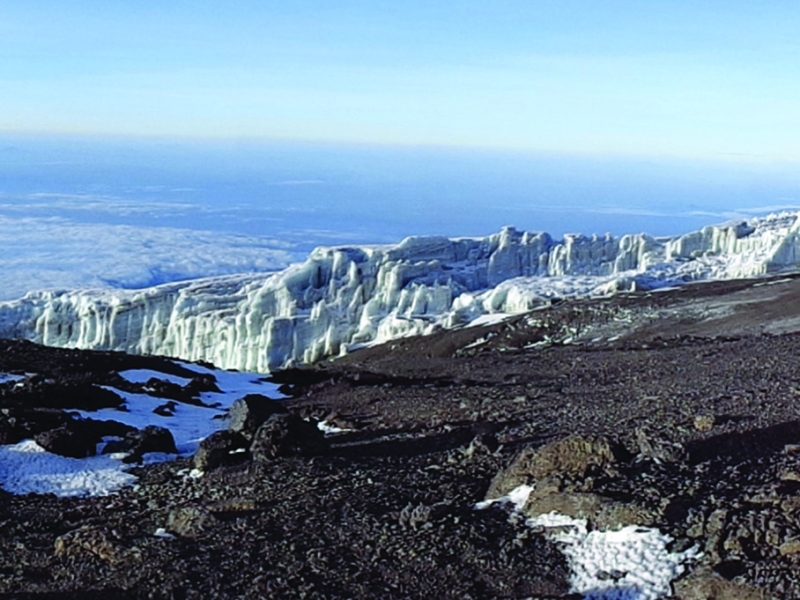
Ready to go
Given that, as I’m told, only 60 percent of hikers who attempt it reach the mountain’s summit, and that approximately 10 of them die every year from altitude-related sickness, my traveling companion and I knew we needed to find a reputable company with the very best guide. We decided on Abercrombie & Kent, with its long history and focus on natural and ecological awareness.
On Oct. 24, 2017, we met our hiking party, comprised of nine other hikers, one guide, four assistant guides, and an amazing 66 porters. The hikers were an interesting and eclectic group of strangers that included seven women and four men, ranging in age from 25 to 68. There was a group of four wonderfully funny and educated women from Miami Beach, whose combined skills helped everyone on the climb; a very happily married couple from Hampstead Heath, London, full of character and caring; a grandmother and her beautiful 22-year-old granddaughter from California; A Maserati-driving Las Vegas dentist with an infectious laugh; and my Carolina-educated business partner who had set this adventure in motion.
Our guide, Dismass Mariki, a seasoned, local, good-looking 36-year-old African man, had a proclivity for checking and re-checking everything we consumed, and a reputation for professionalism, attention to detail, and an impressive 98-percent record of success helping hikers navigate to the summit.
We’d need his help. Out of the seven established Kilimanjaro summit climbing routes, we’d chosen Machame, the more difficult, longer route at 62 kilometers, or 37 miles. It starts in the south and heads to the west side of the mountain, taking a sharp turn to the east, travelling under ice fields and then up to the summit from the southwest Barafu Base Camp.
What I didn’t know then was that the first five days of the climb would be mostly prep work, designed to get each hiker ready for the journey’s final 30 hours.
We all had a lot of acclimating to do. Each and every evening, after a long day’s hike, you could set your watch by the guide’s lectures on improving your blood oxygen levels using deep breathing techniques, the important daily need for hydration that included drinking 5 liters (10 pints) of water a day, the significance of sufficient daily calorie intake, and the right amount of Diamox medication for altitude sickness.
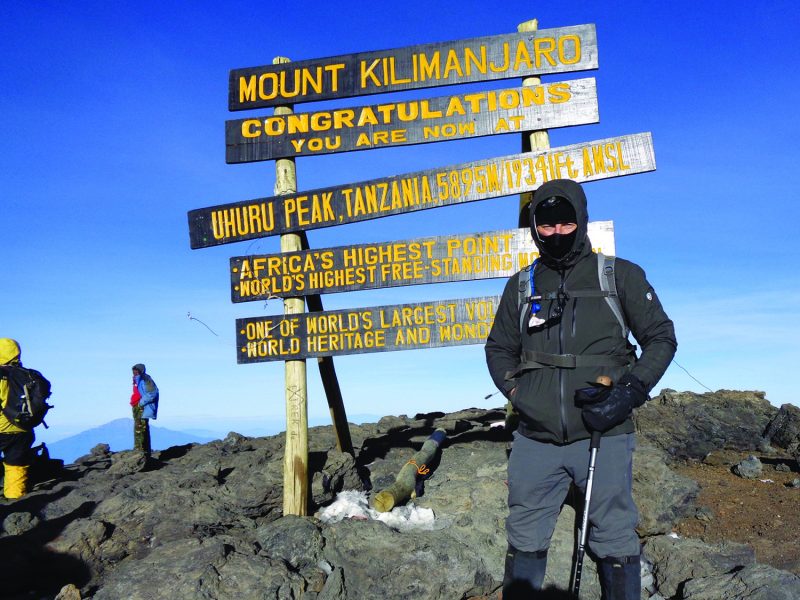
The climb
Day One, the rainforest: The first real challenge was the first leg: an uphill, six-hour hike to the Machame Camp. It stood majestically, 10,000 feet above sea level. A classic heavy shower introduced us all to the rainforest as we trekked. This was the day you realized you were actually camping outdoors, and all clothing that got wet would stay wet. We forgot all about that, though, when we arrived at base camp to a wonderful surprise: a serenade by all 66 porters, who throughout the hike carried from base camp to base camp, day in and day out, absolutely everything we needed, including cots, tents, food, water, cooking equipment, toilets, and our 44-pound bags of clothes and equipment. They sang a Swahili song of encouragement that included the words hakuna matata. This would continue at specific milestones throughout the hike and was much appreciated by all of us.
Day Two, supernatural mountain fog: The next day included waking up to a frost-covered tent and extreme cold. First, we hiked up a steep rocky outcrop for a few hours to Shira Plateau, at 12,500 feet. It was here we witnessed how quickly the “cloak and dagger” clouds of fog mysteriously rolled in and out. It reminded me of the fog shrouding the moors in Arthur Conan Doyle’s The Hound of the Baskervilles. This was the day you started to perfect taking off layers of clothing and within an hour putting them back on again.
Day Three, a martian landscape:
Day three was all about acclimating to high altitudes. First we had a very enjoyable six-hour walk across a Mars-type landscape to Barranco Camp, at 13,000 feet. Then we trekked up to Lava Tower, which stood at a lofty altitude of 15,000 feet, for a lunch that included fresh fruit, hot coffee, leek and potato soup, bread, and a vegetable pastry. And, as always at meal times, Francine, our French-born fellow hiker, had an abundance of rich chocolate to share. The height forced us all to face the very real possibility of headaches, lightheadedness, nosebleeds, and vomiting. The whole idea was to learn how it feels to go up to 15,000 feet and come back down to 13,000 feet. No dramatic effect was noted, apart from a few headaches.
Day Four, introduction to mountain climbing: Day four included a 5-hour morning hike and a climb to Karanga Camp, at 13,000 feet. We went down and up the valley sides. It was a difficult hike that included high knee lifts, loose rocks, and an uphill trail. We crossed streams and enjoyed the mountain vegetation, the African sun, and the brisk wind.
Day Five, balanced cairns: This was the day we reached a 15,800-foot-elevation plateau overlooking Barafu Camp. It was the last resting place before the “big one.” As I had hoped, the African sun was shining on my back. A Sapphire-gin-blue sky introduced us to the beauty of the mountain landscape. This was an emotional hike for us all, as the end was in sight. Previous hikers had created cairns, or balanced stacks of stones, in homage to the mountain. We arrived at our final base camp at lunchtime. We were now prepared and ready for the final 30-hour summit climb.

The Final 30-Hour Day, round trip to the summit: We established a base higher than expected to give us a leg up on the grueling 6-hour nighttime climb to get us up the southwest side of the mountain.
After a high-carbohydrate dinner of pasta and bread, at 6 p.m. we retired to our tents for rest and hopefully some deep sleep. I dozed off to the sound of gale force winds and the flapping of the canvas of the partially zipped tented “toilet” doors. The wind was fierce. Even from our sleeping bags, temperatures were noticeably dropping. We were, after all, nearly three-and-a-half miles up.
We were woken at 11 p.m. for a breakfast of porridge, toast, and raspberry jam. We dressed in our sub-zero degree Gore-Tex clothing, and at 12:30 a.m., all 11 hikers, the head guide, and four assistant guides started the final uphill hike. It was a clear, cloudless night with a Bible-black sky and brilliant stars, one of those nights that made you wish you had majored in astronomy. The moon had a piercing white center and five concentric rings. We could see the Milky Way, the galaxy that contains our solar system, and 100 billion stars. Its dust lanes, nebulas, and star clusters arched across the night sky from the northeast to the south. It may have been the rarefied air, the elevation, or the isolation, but there was an undeniable feeling and a belief, as well as a sense and taste, of the infinite and eternal.
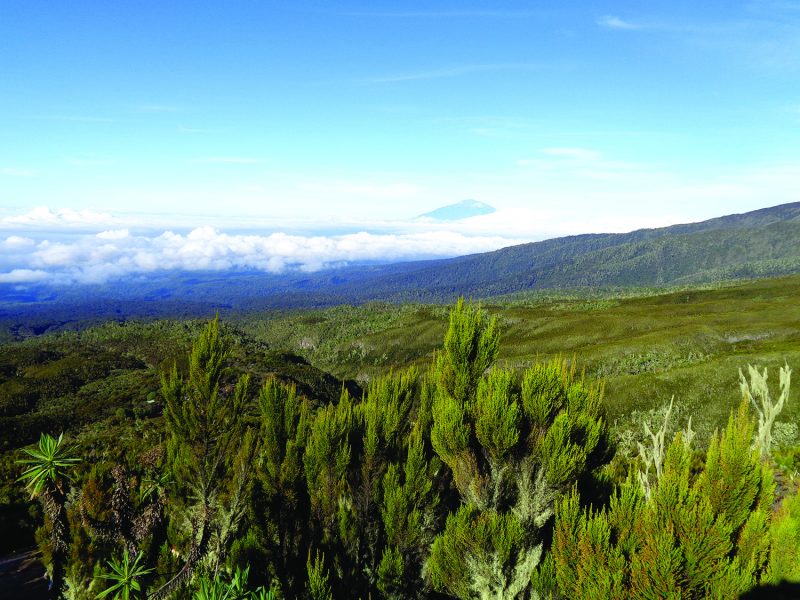
We set off on a slow, easy march uphill, a pallbearers’ pace that helped keep the team together. Each of us had a headlamp firmly positioned in the middle of the forehead which allowed us each to look down and shine a light at the heels of the hiker in front of them. We moved as a team in step with each other.
Starting the hike up the final escarpment, I could see four other groups of hikers varying in size. At the top of the mountain, I could see the lights of the headlamps of the lead group.
Temperatures continued to drop. At 3 a.m., the temperature reached a low of -6 degrees Celsius, or 21 degrees Fahrenheit. Sleet stung the uncovered parts of our faces. And then the Jim Lovell, Apollo 13 moment happened. The water in my CamelBak bladder started to crystalize and freeze. It started at the mouthpiece and slowly travelled down the pipe. I remember laughing and saying out loud “Houston, we have a problem.” It was a surreal moment for a man who lives at sea level and longs for the hot Carolina summers.
My water tube, as well as those of the other 10 hikers’, was now out of commission. The guide had predicted such an event and was armed and ready with cups of water. At each rest stop, you were required to drink a large cup of water in a silver tin cup and consume four non-freezing-type sugar cookies. You could see the water in the tin cup freezing as you tilted it into the wind.
At about 5 a.m., there were at least two requests from our team to turn around. We passed a group of hikers consoling a person who was visibly suffering from altitude sickness. We continued the slow march uphill to the summit.
The reverend sun rising at 6:15 a.m. gave us a new view of our objective and the strength and courage to go on: We could see the top of Kilimanjaro. It was within reaching distance. The air was noticeably thinner. The freezing temperatures had given way to a much milder morning air mass.
“Congratulations, you are now at Stella Point” read a sign, but the actual summit was still 45 minutes away. The excitement was palpable. We continued to walk around what was clearly a dormant volcano, with its dark ash and crater-like shape.
And there it was! The sign we had flown 20 hours and hiked 62 kilometers through rainforest, desert, and arctic conditions to touch. “Congratulations. You are now at Uhuru Peak, Tanzania, 5895 Meters, 19,341 feet. Africa’s highest point. World’s highest free-standing mountain.”
It was worth all of the planning, preparation, and investment.
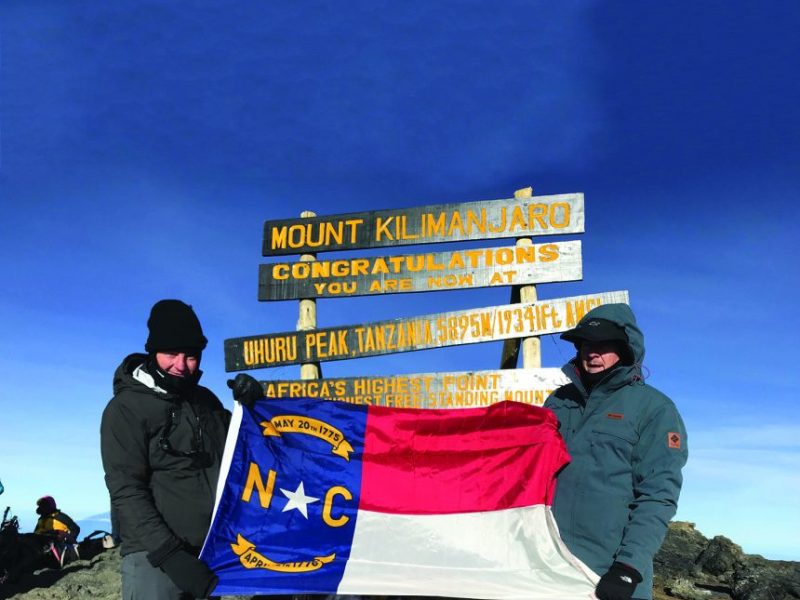
The lure of Kilimanjaro, this “mountain of greatness,” had been too hard to resist. While there was no real physical life-changing experience, there was a sense of achievement. The outcome was more about finding out about your soul, and your sense and feeling for the immeasurable and the infinite. It was more about the power of introspection and self-examination.
Mount Kilimanjaro has the grace, power, and glory to do that, and also the ability to take your breath away.
Article Source: https://waltermagazine.com/explore/mount-kilimanjaro/


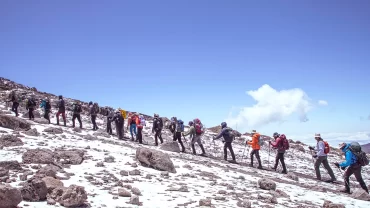
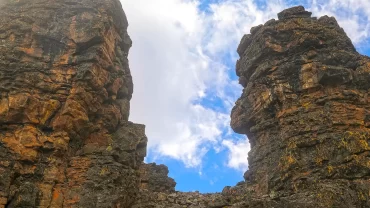
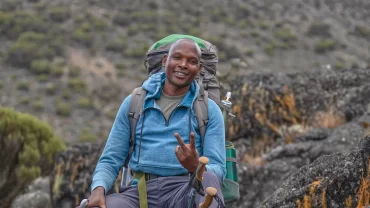
Comment (0)